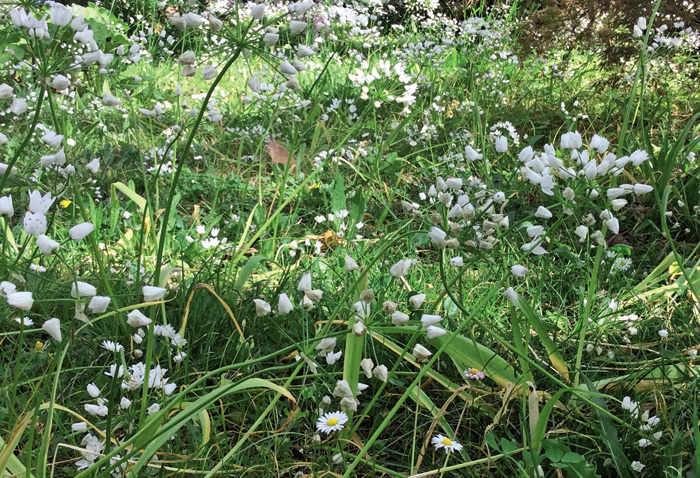

This first day of April, an Italian friend has just sent me a photo of the bouquet of flowers he has put to beautify the food table. What envy mine! Red black camellia (Camellia sp.) and Forsithia viridisima of yellow gold, a pink peony (Paeonia arborea) and a white and wild garlic. I told him it seemed like an ossezno, Allium ursinum. He says no, if it is “aglio pelosetto,” Allium subhirsutum. She has a flower in front of her nose and I can't give in. To the Italian “I give up”. I have not found him a name in Euskera and, turning to his, I propose a “hairy garlic”, remembering, by the way, the hairy edge of the leaves.
On the only winter flower, three signs that the new summer has crashed. That is the heart of Italy, ahead of us compared to ours; at least, climatologically, no doubt.
Discussing whether I was a wild garlic or the other, he sent me pictures of the prairie next to his house. So yes, I've been jealous. Due to the donation of flowers, do not cut the herb: “Il prato è meraviglioso, pieno de fiori!” And he was scratching and scratching the wound of envy ... How they use in the kitchen, like the leaf, the subterranean head. In the hometown of his mother-in-law, in Sardinia, they particularly want him, how raw you are to enjoy salads, like condiments or stimulants. And he taught me a new word: hairy garlic is phyto-nutritional. As far as I know, phytofood represents the art of using wild plants for food. In our country it is called ethnobotany, but in my opinion in too broad a sense. It seems to me that ethnobotany encompasses all uses of plants. From now on I know: in Ethnobotany I will call “phytofood” the field of food. Grazie, Francesca!